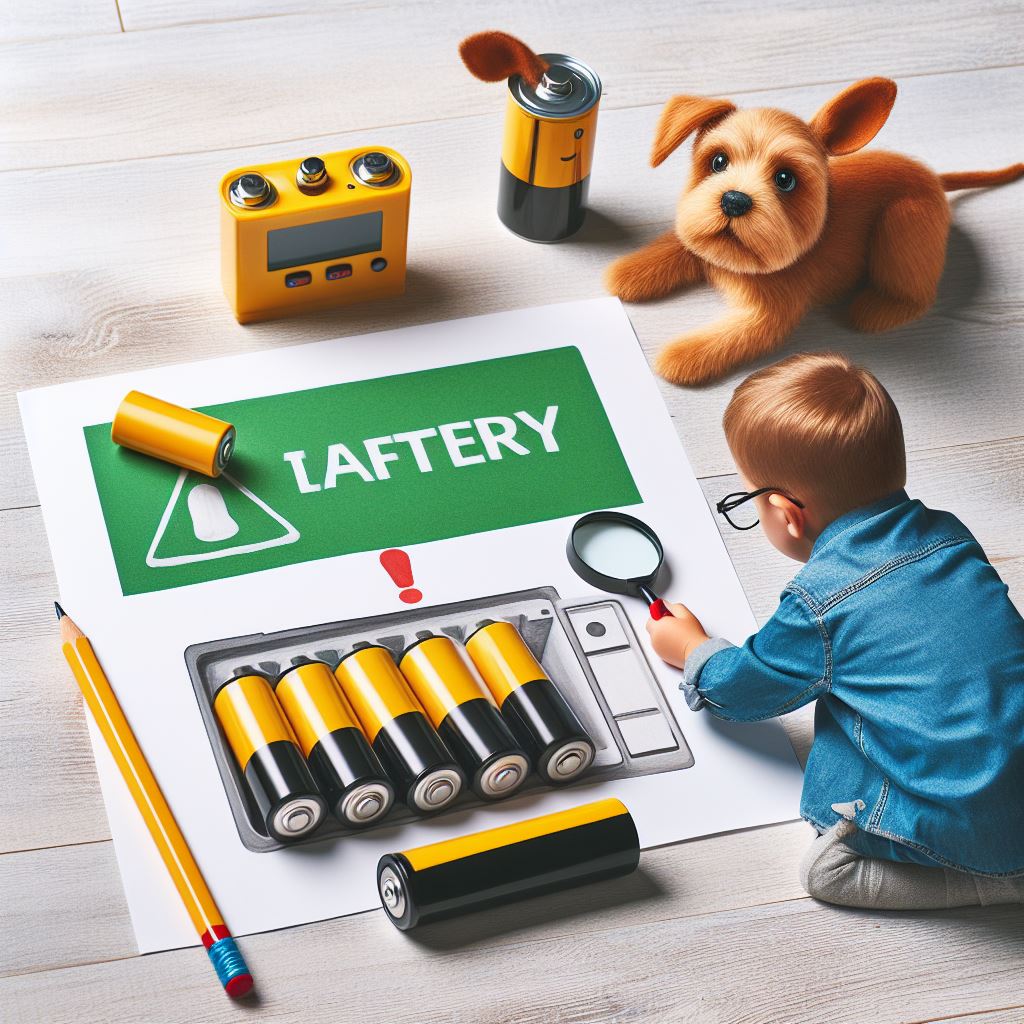Tiny Treasures, Big Risks: Protecting Children and Pets from Battery Dangers
In the realm of everyday wonders, batteries power our lives, lighting up games, keeping remotes at the ready, and fueling our digital adventures. But these tiny treasures can harbor hidden dangers for our most precious companions – our children and pets. Their curiosity and instinctual exploration can lead them to encounter the invisible threat of batteries, potentially leading to serious health concerns.

This blog post serves as your guide to keeping your little ones safe from the unseen perils of batteries. We’ll navigate the maze of battery types and sizes, uncover the risks they pose, and equip you with essential battery safety tips for children and pets. So, let’s embark on this journey together, ensuring a happy and healthy home for all.
Stay tuned for our next chapter, where we’ll delve deeper into the meaning of “battery safety” and understand the types of batteries that pose the greatest risk.
Decoding the Danger: Understanding Battery Safety and Risky Types

The term “battery safety” might seem abstract, but it boils down to safeguarding our loved ones from potential harm caused by ingesting or interacting with batteries. Here’s a breakdown of the risks involved:
Ingestion:
This is the most significant concern, especially for small children who tend to explore through putting things in their mouths. Batteries come in all shapes and sizes, with some button batteries posing a particularly grave threat. These tiny powerhouses can be easily swallowed, lodging in the throat or digestive tract, leading to internal burns and tissue damage.
Chemical Leaks:
Even without ingestion, leaking batteries can pose risks. The corrosive fluids inside can irritate skin and eyes, and inhaling fumes can be harmful.
Electric Shock:
Damaged batteries or improper handling can lead to electric shocks, though this risk is generally lower with common household batteries.
Now, let’s get specific about the types of batteries to be most vigilant about:
- Button Batteries: As mentioned earlier, these pose the greatest risk due to their size and high concentration of lithium metal. Found in watches, toys, singing cards, and many other devices, they are easily accessible to curious hands.
- Lithium-Ion Batteries: Used in laptops, phones, and other electronics, these batteries can cause thermal burns if damaged or punctured. While ingestion is less likely due to their larger size, the potential for fire hazards makes them worthy of attention.
- Coin Batteries: Larger than button batteries but still small enough to be swallowed, these power car key fobs, remote controls, and some flameless candles.
Remember, Do not let small children play with things that might use button batteries.
Stay tuned for the next chapter, where we’ll equip you with practical battery safety tips for children and pets to create a secure and carefree environment for your loved ones.
Powering Up Protection: Essential Battery Safety Tips for Children and Pets

Armed with the knowledge of potential battery dangers, it’s time to take action. Here are some essential battery safety tips for children and pets to create a home brimming with joy, not apprehension:
Preventative Measures:
- Storage is Key: Keep all batteries, especially button batteries, out of reach and sight of children and pets. Lock them away in cabinets or high shelves, away from curious paws and fingers.
- Secure Devices: Check battery compartments on toys and gadgets regularly, ensuring they are tightly closed and tamper-proof. Consider using duct tape or specialist childproof latches for extra security.
- Declutter Regularly: Discard dead batteries promptly and safely. Don’t leave them lying around as tempting treasures for your little ones.
- Educate and Engage: Explain to older children, in age-appropriate ways, the dangers of batteries and why they should not be touched or played with.
- Pet-Proof Your Space: Pets can be equally inquisitive. Secure battery-powered devices used for pets, like automatic feeders or toys, and keep battery storage areas inaccessible to furry friends.
Monitoring and Awareness:
- Vigilance is Vital: Supervise young children closely, especially during playtime or when they are exploring new environments.
- Be a Battery Detective: Regularly scan your home for potential hazards, checking if any device might have exposed batteries or loose compartments.
- Act Fast, Stay Calm: If you suspect your child or pet has ingested a battery, seek immediate medical attention. Don’t induce vomiting or give them anything to eat or drink. Time is critical in such situations.
- Know the Numbers: Have the Poison Control Center number readily available and programmed into your phone for quick access in case of emergencies.
Remember: Do not let small children play with things that might use button batteries.
These simple yet crucial steps can make a world of difference in safeguarding your loved ones from the hidden dangers of batteries. By combining proactive measures with vigilant monitoring, you can create a secure haven where curiosity flourishes without fear.
Stay tuned for the final chapter, where we’ll address frequently asked questions and offer additional resources to empower you on your battery safety journey.
Safeguarding Little Treasures: Wrapping Up with FAQs and Resources
We’ve navigated the intricacies of battery safety, equipped ourselves with essential tips, and prioritized creating a joyful and secure environment for our most cherished companions. Now, let’s address some lingering questions and offer additional resources to empower you on your battery safety journey:
FAQs:
What should I do if I find a loose button battery?
Dispose of it safely in a dedicated battery recycling bin. Avoid touching it with bare hands and keep it out of reach of children and pets.
Can I store batteries in the refrigerator?
While low temperatures can help prolong battery life, it’s generally not necessary for household batteries. Store them in a cool, dry place away from direct sunlight.
Are rechargeable batteries safer than disposable ones?
Not necessarily. While they reduce waste, improper handling or charging can still pose risks. Follow manufacturer instructions and safety guidelines meticulously.
Where can I find more information on battery safety?
The National Battery Industrial Association (NBIA) and the American Association of Poison Control Centers (AAPCC) offer comprehensive resources and educational materials.
Additional Resources:
- NBIA Battery Safety: https://batterycouncil.org/industry-stewardship/employee-safety/lithium-battery-safety/
- AAPCC: https://www.aapcc.org/
- Kids Health Battery Safety Tips: https://www.safekids.org/safetytips/field_risks/batteries
Remember, battery safety is not just about avoiding accidents, it’s about creating a culture of awareness and prevention. By incorporating these tips into your daily routine and sharing them with loved ones, you can weave a protective net around your little treasures, allowing them to explore with carefree joy, knowing they are safeguarded from unseen dangers.
Let’s make battery safety a priority, not just for today, but for every day. Together, we can ensure that the spark of curiosity lights up their lives, fueled by knowledge and protected by love.
I hope this blog post has been informative and empowering. Please feel free to share your thoughts, experiences, and additional safety tips in the comments below. Together, we can build a safer and happier world for our little ones, one battery at a time.
Leave a Reply